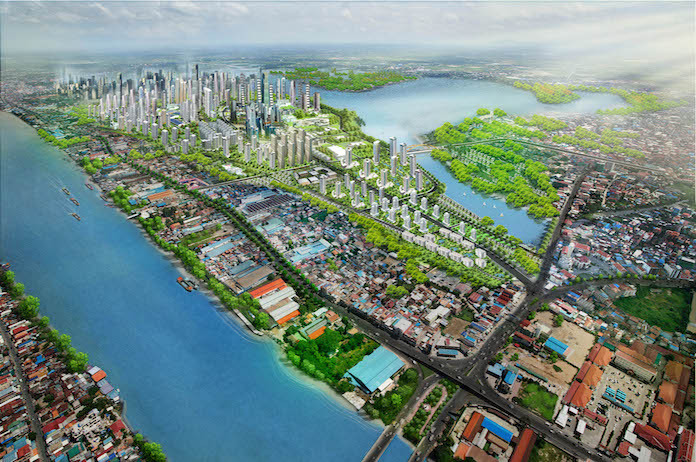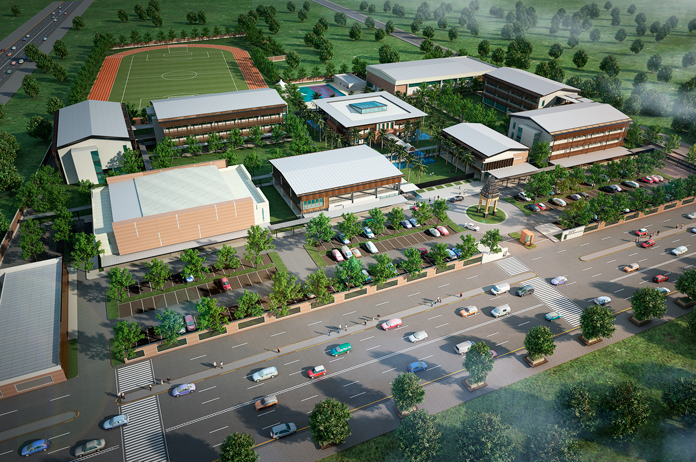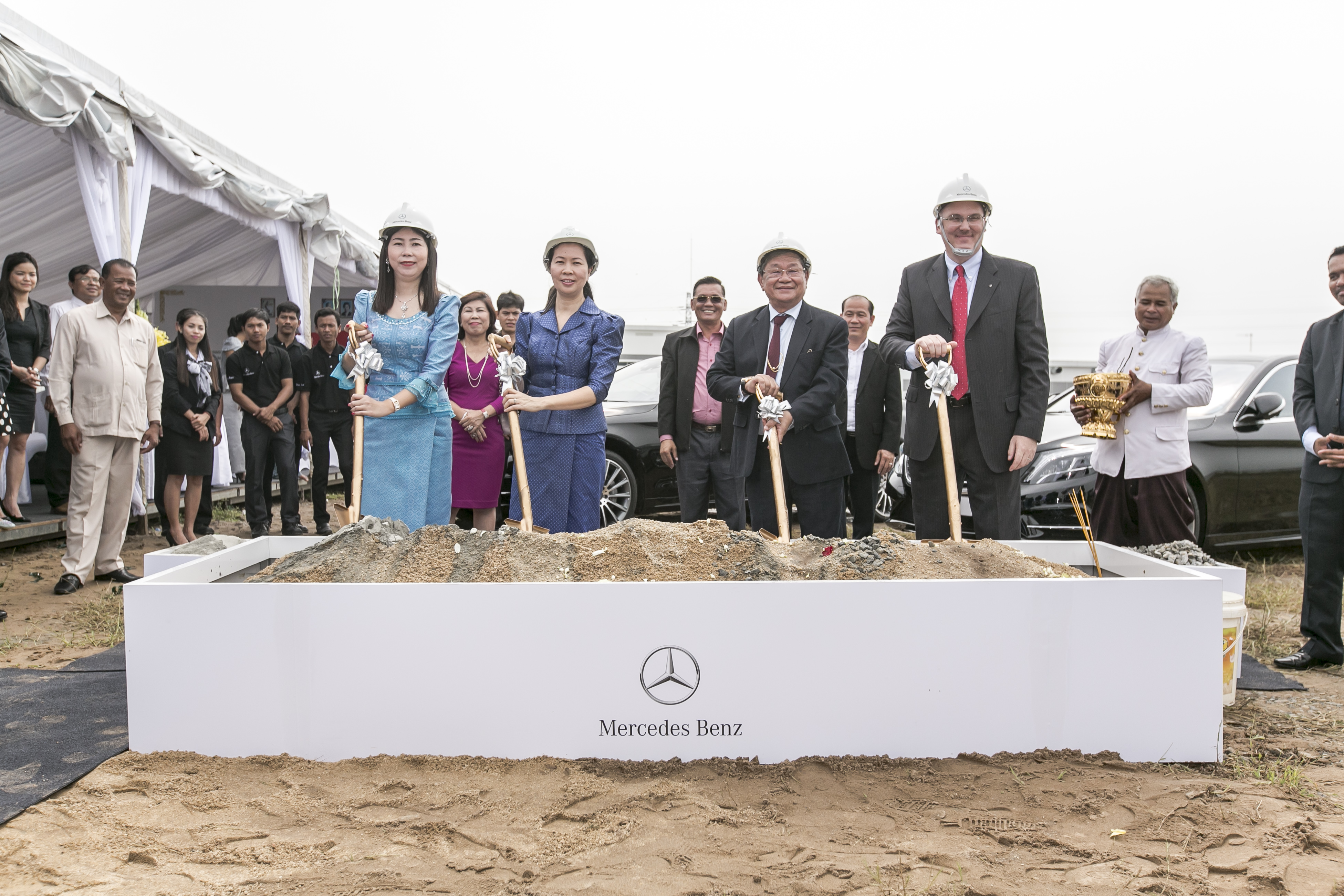Phnom Penh's Much-Awaited Expansion: ING City

There is no doubt: Cambodia’s construction sector is in the midst of a gargantuan boom. The recent surge in the number of approved projects is staggering: 990 construction projects have been approved during the first five months of 2016, a significant increase compared to 2015, which saw just 2,305 approved projects the whole year.
In the next few years, Phnom Penh will see a great number of cutting-edge buildings and ambitious development projects come to completion. However, one project stands out due to its scale: spread over nearly 2,600 hectares of land, ING City—previously known as AZ City—is presumably the largest development project in Cambodia and one of the largest in Southeast Asia.
Phnom Penh’s own garden city
The colossal city-project was in the news recently, as a massive boulevard that will link it to Phnom Penh proper nears completion. The 60m wide, 9km long artery, which bears the name of the country’s prime minister, will be the largest road in Phnom Penh once completed. It is fitting indeed that such a massive road should service the biggest development project the country has ever seen. Hun Sen Boulevard, as the artery is known, runs through the capital linking Phnom Penh at Street 271 to Takhmao, and providing access to the Boeung Choeung Ek wetlands, the site where ING City is being raised. The ING City project covers 2,572 hectares of land, of which 1,673 hectares will be used for a mixture of residential, retail, healthcare, education, hospitality and commercial spaces, while the rest of the wetlands will be allocated for preservation, including a 505-hectare water reservoir.
The project is the brainchild of ING Holdings, a leading financial and real estate management firm, who also has the majority stake in The Foreign Trade Bank (FTB Bank). Since 2004, the company has been reclaiming land with their vision being that of a garden city that encompasses all the facilities of a regular, functional city (residences, commercial spaces and industry), neatly arranged and compartmentalised, but in which nature steals the show, with lush green spaces and gardens dotting the satellite city.
Expanding south
There was a time in which property experts believed Phnom Penh would expand to the west and the north, as investors follow their business interests. However, the prevailing wisdom was challenged by a local architect, Vann Molyvann, who argued the development of the capital should best be directed southward. “I think that if the city develops to the south it is better than to the west as the south is an area that is higher above the river, which is key to avoiding floods,” the architect said during a lecture given at Pannasastra University in 2012.
According to Molyvann, the western areas of the capital, where national roads 4 and 5 run, is hardest hit by floods during the wet season, while the south is hardly ever affected as bad, due, to an extent, to a waterway that can be opened to release flood waters, the Prek Tnoat river. The investors behind ING City took the professor’s words to heart when choosing a location for their gigantic project. When asked why did ING Holdings choose this particular area for their project, Dr. Simon Vancliff, Investment & Development Director, says that “H.E. Vann Molyvann predicted that the city would eventually move to the south and that this area in general is almost exempt from flooding.”

Centralising industries
The development of the city has been divided into four phases, which are to be completed subsequently. “Tentatively, we plan for five years per stage, which is of course subject to market demand and economic drivers,” says Dr. Vancliff, who holds a PhD in Economics and Finance. The project is currently in its first phase, which consists of 623.4 hectares of land. “Currently Phase One is under extensive backfill and infrastructure implementation, with developers establishing their boundary lines and commencing construction,” comments Dr. Vancliff. The area allocated to the first phase has been divided into 13 concept clusters, an arrangement that aims to centralise activity and reduce traffic congestion in the capital
. A government city—to centralise all government offices—, and a building materials city—a one-stop location for the supply and distribution of all types of building materials—are some of the conceived clusters. There will also be an auto city, in which Mercedes-Benz has already began the construction of a dealership. Other clusters include a factory outlet area, a Chinese retirement home area, and an amusement park. The International School of Phnom Penh (ISPP), one of the capital’s elite schools, has already relocated within the planned city, leaving behind its previous location at the heart of Phnom Penh, on Norodom Boulevard. Next to ISPP, a gated community with over 209 residences known as Villa Town, has already been realized.

Planning for efficiency
Infrastructure, accessibility to the city, and the efficient movement of people and goods on roadways were prioritised during the drafting of the ING City’s master plan. The city’s blueprints boast a complex road network designed to achieve a safe and efficient traffic flow and to minimise traffic jams. Besides the much-awaited Hun Sen Boulevard, the city will have a matrix of 30m wide roads, a road that will link to an upcoming ring road that will itself connect to Chabar Ampove through bridges, and dual bridges over the lake.
Moreover, from an energy and utilities’ point of view, the city will be self-sustainable. According to the proposed master plan, the city will have three water reservoirs, five sewage treatment plants and nine electrical substations. “This development will allow ING City to centralise certain business clusters, expand extensively and offer a safe, open and landscaped environment, with modern infrastructure and superb access in and out of the project,” says Dr. Vancliff. The downside? We will need to wait a little before we see ING Holdings’ vision materialise. “We estimate the project will be finished completely in approximately 20 years from now,” says Dr. Vancliff.